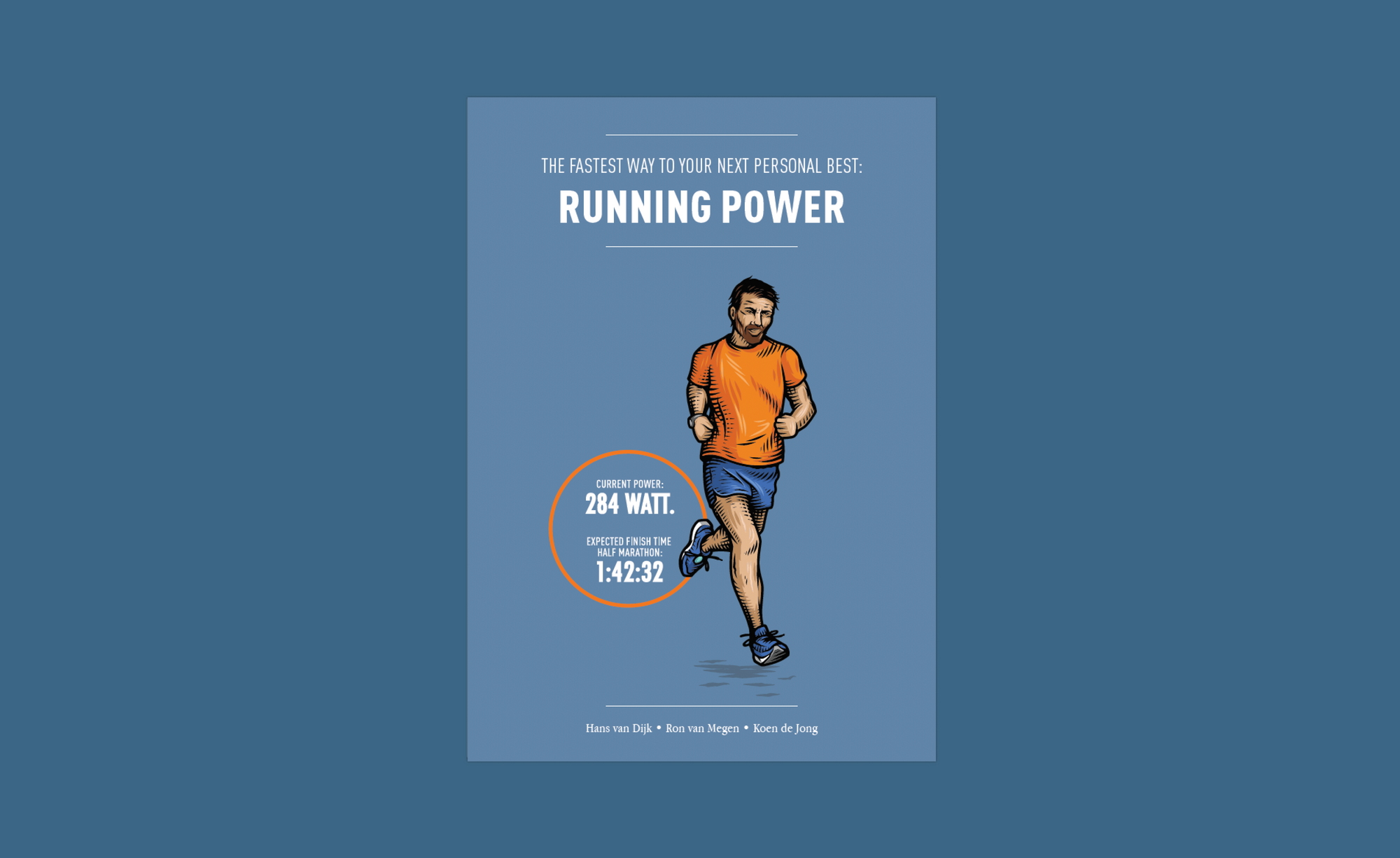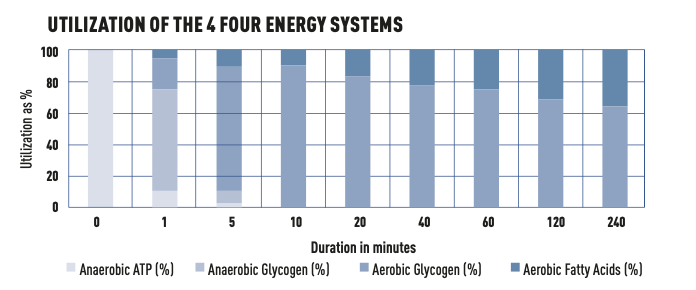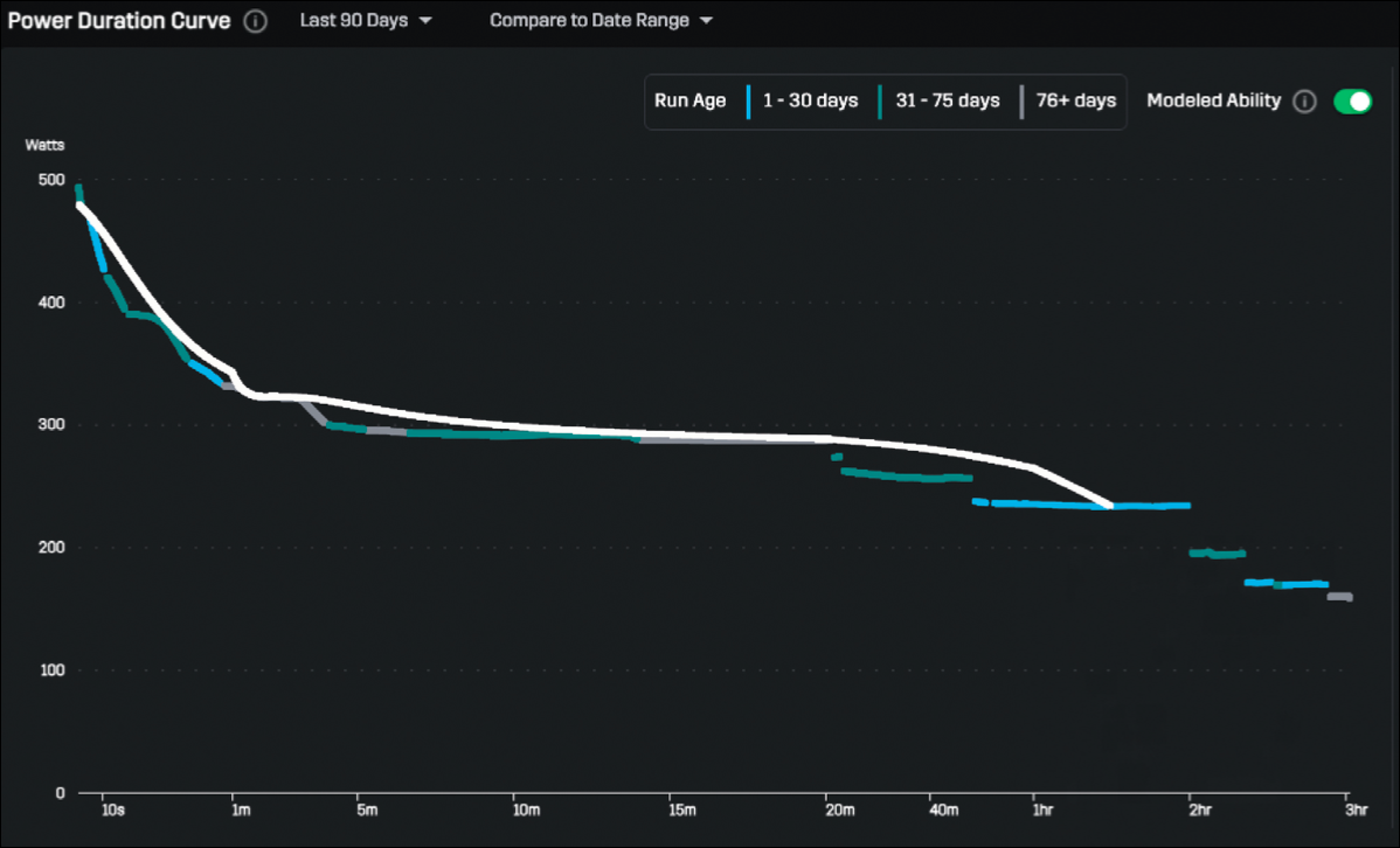Train in Your Zones

Where are you?
Earlier, we wrote about 5 different zones. We’ll discuss this in more detail here.
Some watches work with D0, D1, D2, D3 and AT+, with AT corresponding to your Critical Power or tipping point. Other watches keep zones Z1, Z2, Z3, Z4 and Z5. Stryd also works with 5 zones: Easy, Moderate, Threshold, Interval, and Repetition.
The zones are similar, but not completely interchangeable. For example, Stryd works with two zones above Critical Power, while heart rate watches only have one zone after the tipping point.
How do you use the zones in your training?
Variation is the magic word if you want to make progress. The main reason why you want to know your different zones is because of the two fuels you carry with you: fats and sugars. We’ve already described the different fuels in detail earlier. As you know, as an endurance athlete, you mainly use fats and glycogen. You use your fat stores when you run slowly, and glycogen becomes your main fuel when you run faster.
Variation in training between your fuels makes you faster and provides a good basis to work from. Variation is needed to use your fats efficiently as fuel and to maximize your glycogen stores. You need a good mix between gentle training and intensive stimuli, combined with good recovery.
After all, you don’t get better during training, but during the recovery afterwards.
You can teach your body to run faster on your fats, partly by running slow and long. Note: this is your Zone 1 (or D0) on a heart rate monitor, and the Easy zone in Stryd. This zone is variable in running intensity. If you make progress, you can run faster on your fats and thus your pace will increase. You see this when you train with heart rate: you run faster at the same heart rate. This is fully reflected when you run by power: your capabilities in this lowest zone go up.
Gentle workouts are good for the basics. If you train more intensively, you will enter an important zone where your body can choose which fuel to use: fats or glycogen. This zone lasts from Easy to Critical Power. Which fuel your body prefers in this zone depends, among other things, on stress and nutrition. Do you have a lot of stress and do you eat a lot of sugar and carbohydrates? Then your body prefers glycogen combustion. In addition to stress and nutrition, your running training is of course also a trigger for fat or glycogen burning.
Above Critical Power, you mainly burn your glycogen while your fat burning plays a smaller part. With Stryd, the two zones between Easy and Critical Power are called Moderate and Threshold. The slower you run, the more your body can rely on your fat stores. There’s a lot to be gained there with targeted training in the various zones. You get to know your body and you learn which zones you’ve barely trained at the moment. Especially in the beginning, runners often notice that they have a strong preference for one zone over others.
So either fast or very calm.
Are you a runner who sees a training session (or would you rather call it a run?) as a good moment to catch up with a friend? Then there is a good chance that you have a great base in the low zones, but that you have to get used to more intensive training. Or do you think that training doesn’t make sense if you don’t sweat a lot and have muscle pain? There’s a good chance that you’ll improve a lot if you also include slow training sessions. Training at a slow pace is not a waste of time.

Actually, it’s meaningful training which helps build a solid foundation. Figure 5 shows which fuel is most useful to you in percentage terms at maximum effort. You can see that, starting from 5 minutes, your glycogen and your fatty acids are the main fuels used. In this figure, we make the assumption that you run as fast as possible. If you run slower, you will use more fatty acids, proportionally. Smart variation in intensity and duration of your workouts ensures that all energy systems are trained. Note: through smart training and healthy nutrition you can train your body to run more efficiently on your fatty acids.
In the blog What is Critical Power and what can you do with it?, we discussed the Power Duration Curve.
This curve is a great way to check whether you train with enough variation, and whether you’re engaging all energy systems during your training sessions.
In the curve in your Stryd app, you can see your maximum power from 10 seconds to roughly 3 hours (depending on how long you run) from the past ninety days. To get a nice, personal graph, it’s good to sprint at least once for 10 seconds, preferably also uphill or against the wind. And to run a long endurance run at a good pace. The curve also shows whether you’ve run this wattage in the past 30 days, whether it was between 31 days and 75 days, or more than 76 days. Anything older than 90 days is not taken into consideration.
How does the curve help to check if you have enough variation in your training?
If the Power Duration Curve is a smooth line for the past ninety days, then you know that you’ve trained with plenty of variation. However, if you see that your line is discontinuous and drops at certain times, then there is an opportunity for improvement.

In this example you can compare your true power duration curve with the modeled curve (white), which is an estimate for the power you are capable of at all durations, even if you have not produced power data at all durations. Based on this curve, the runner can target specific areas of their curve to improve. For example, they could perform a max effort 3 min- ute activity and a max effort 10 minute activity, two durations which will help improve the overall accuracy of your Critical Power.

Want to learn more about Running Power?
Download The Fastest Way To Your Next Personal Best: Running Power eBook (with over 65+ pages of content) for free to learn simple ways you can use power to improve your running performance.
Click here to download. Enjoy the book!

